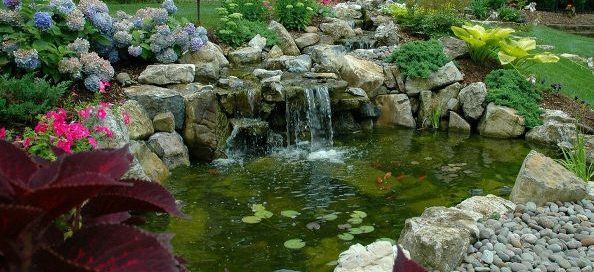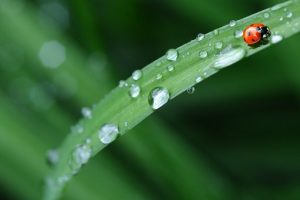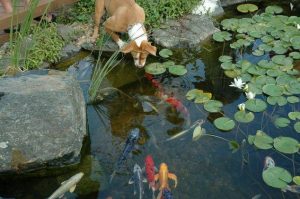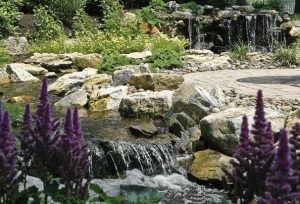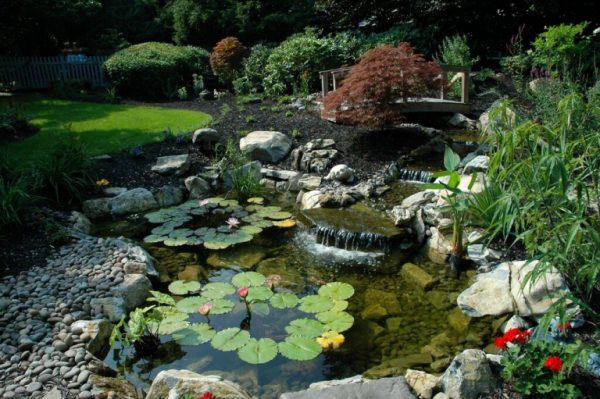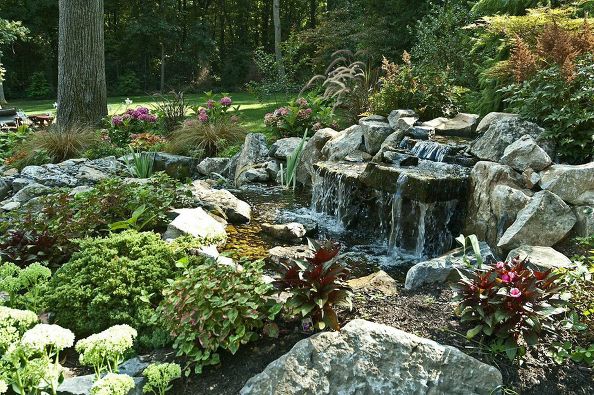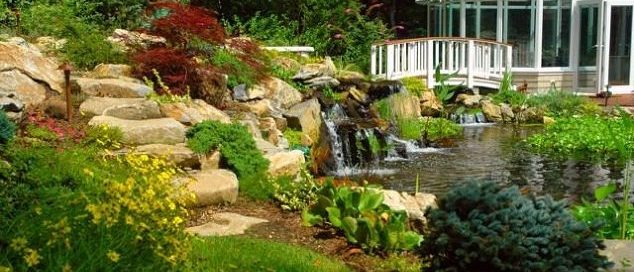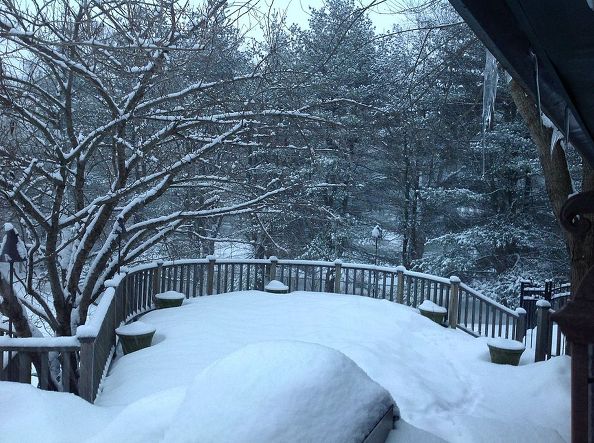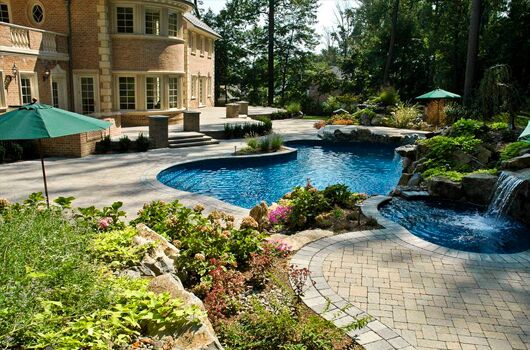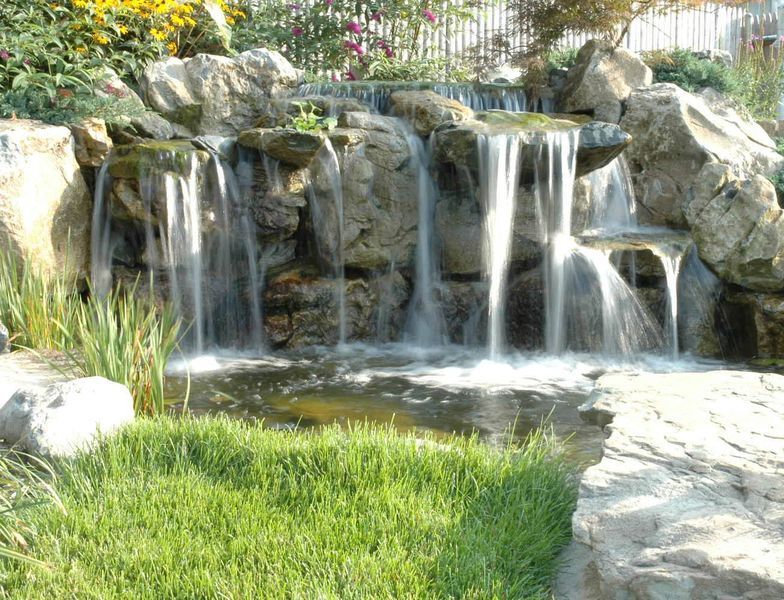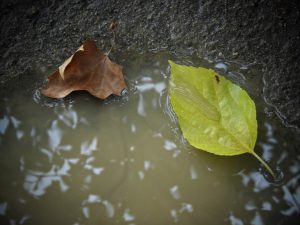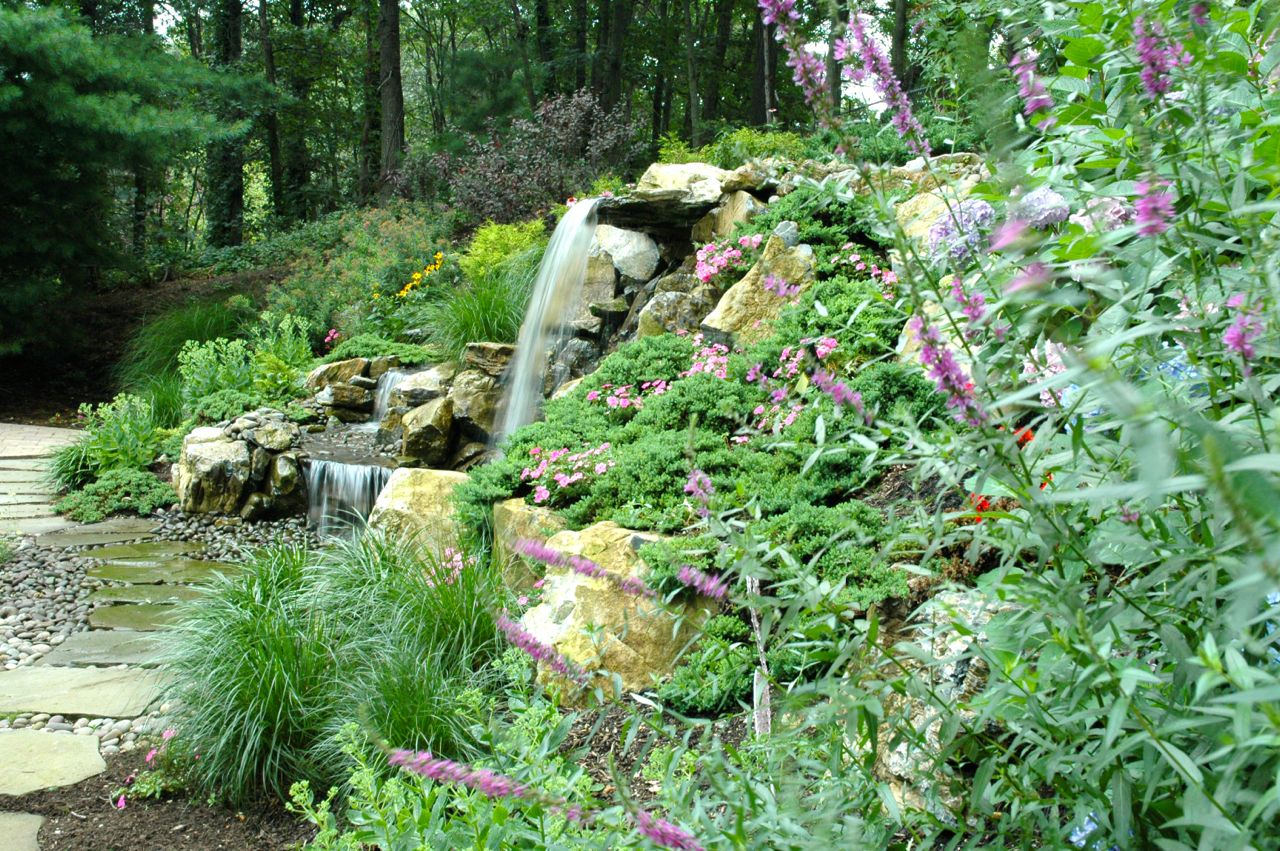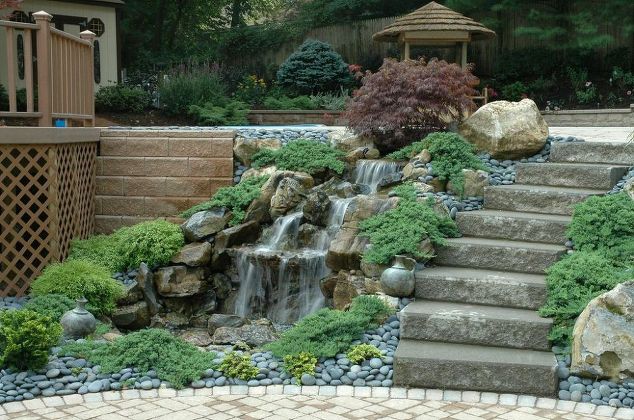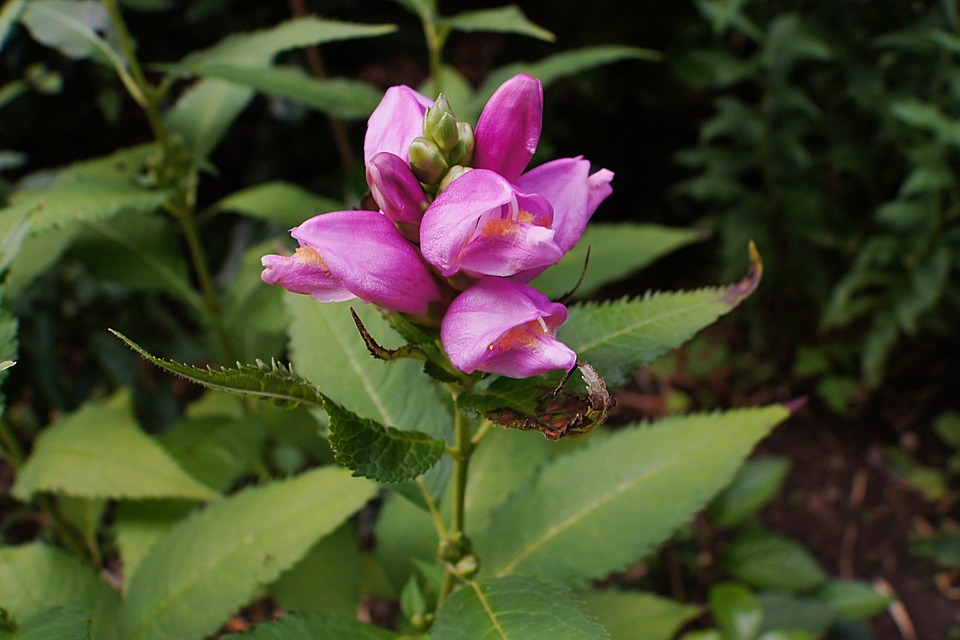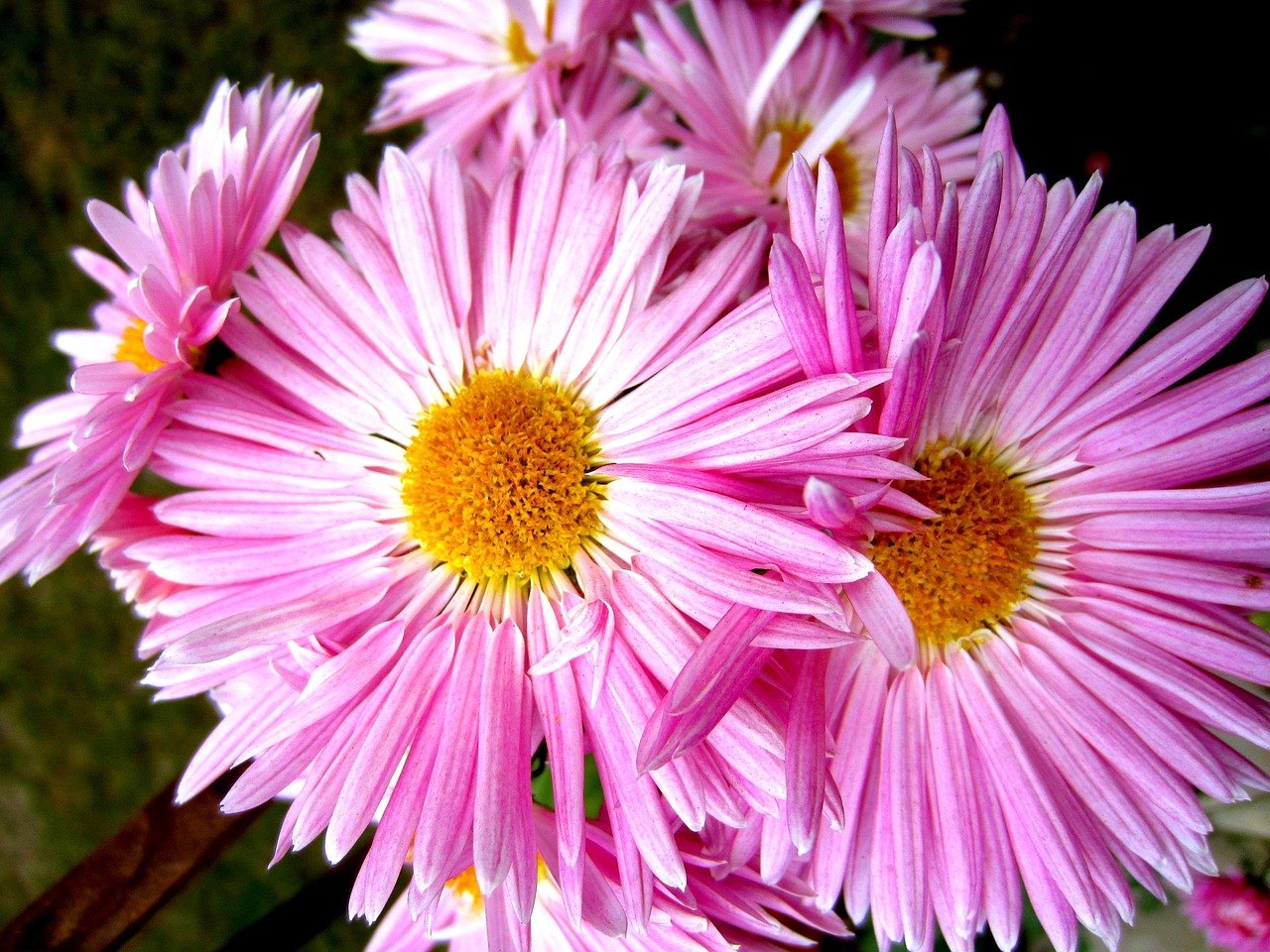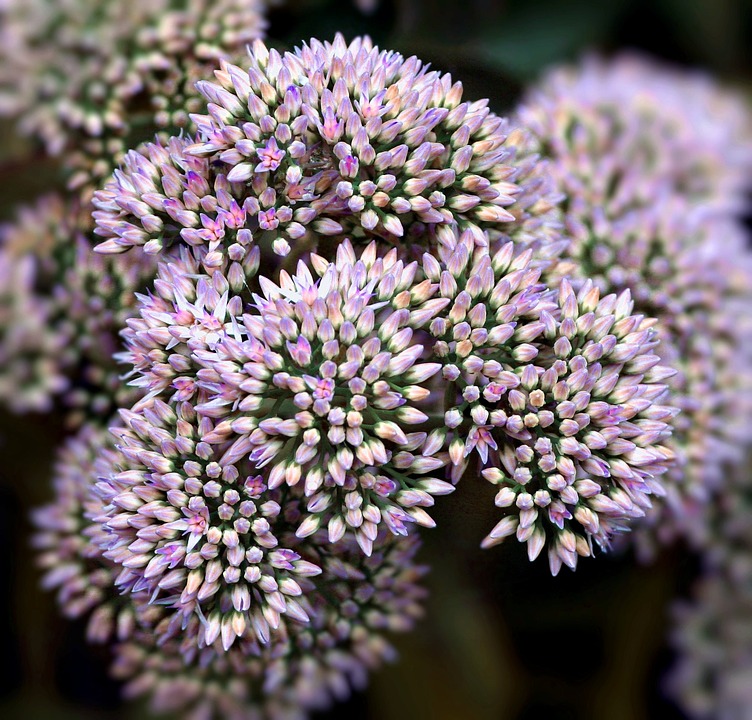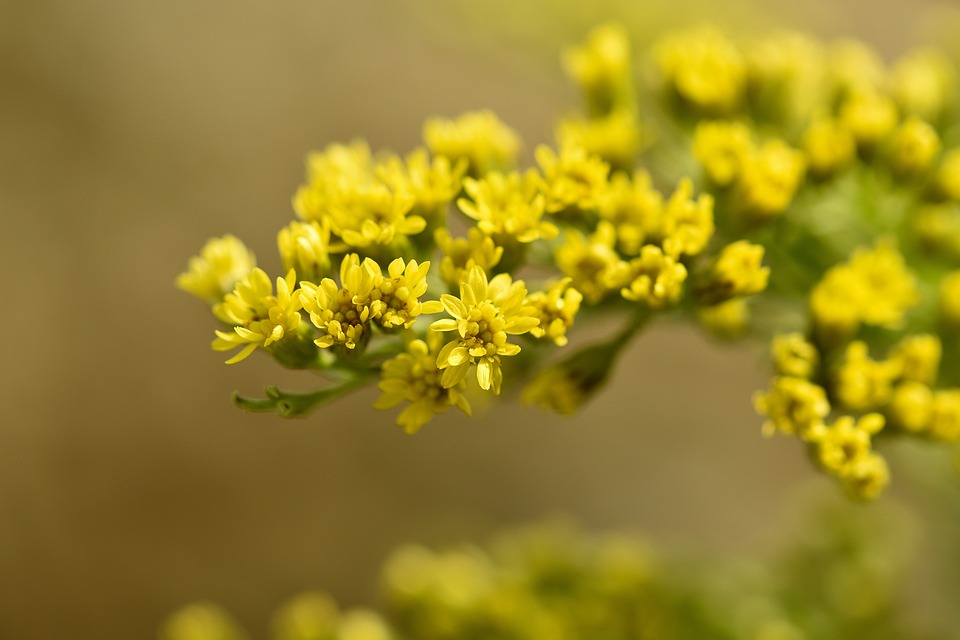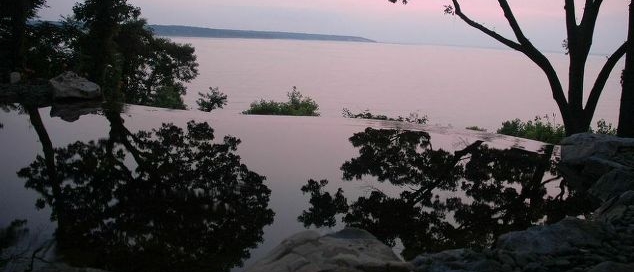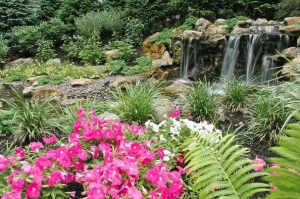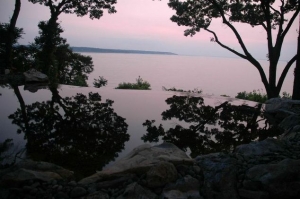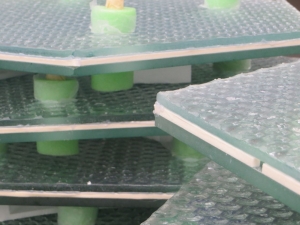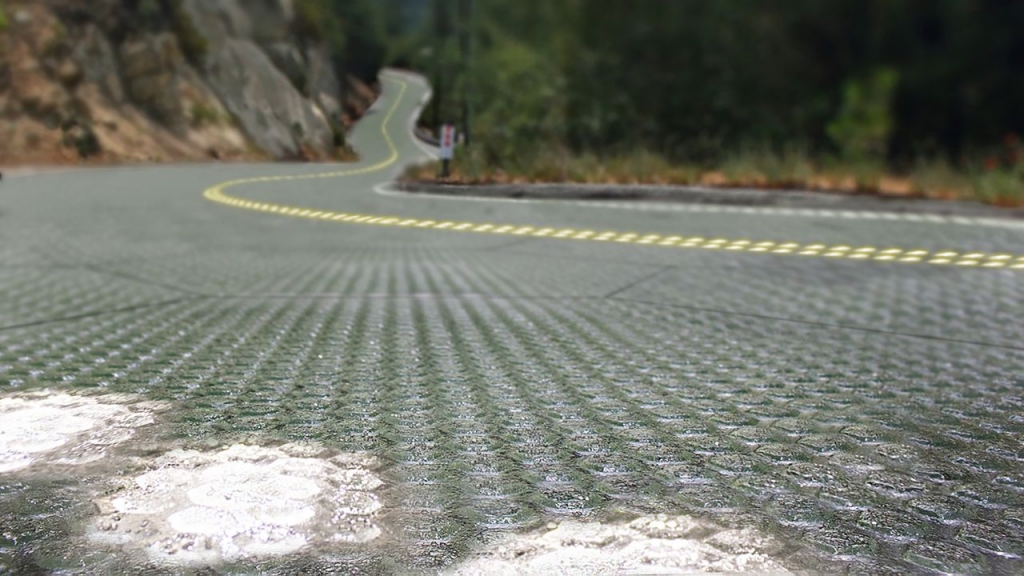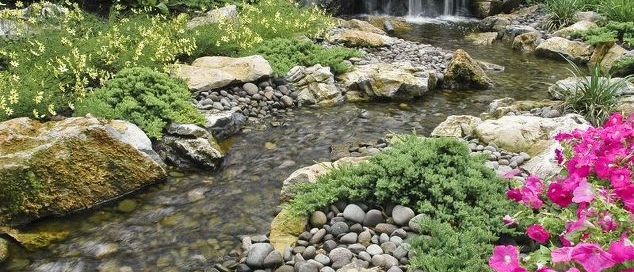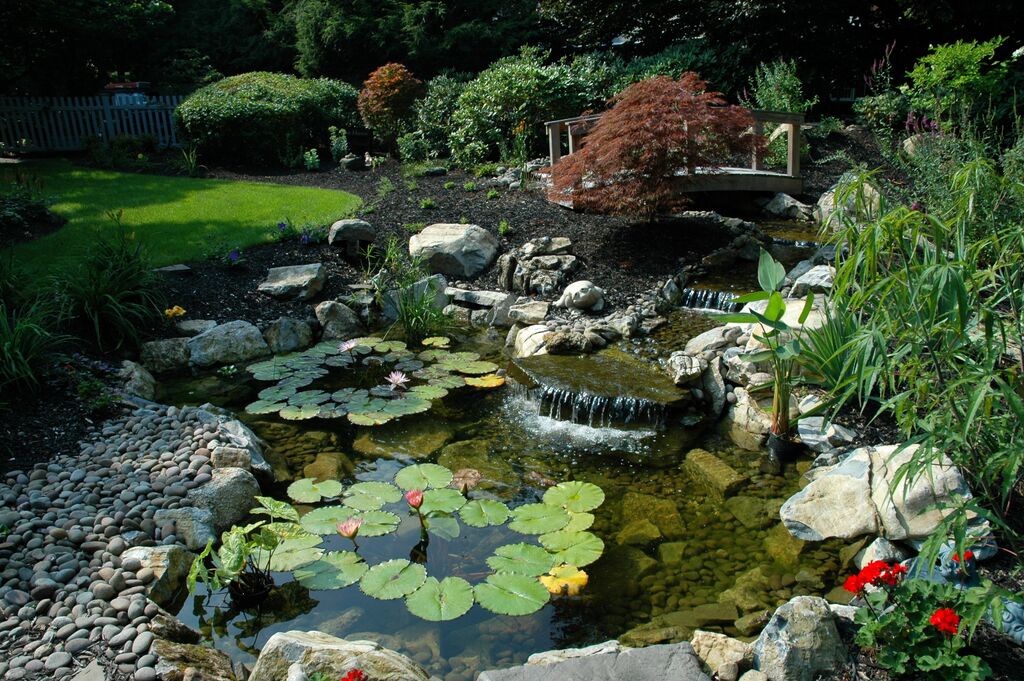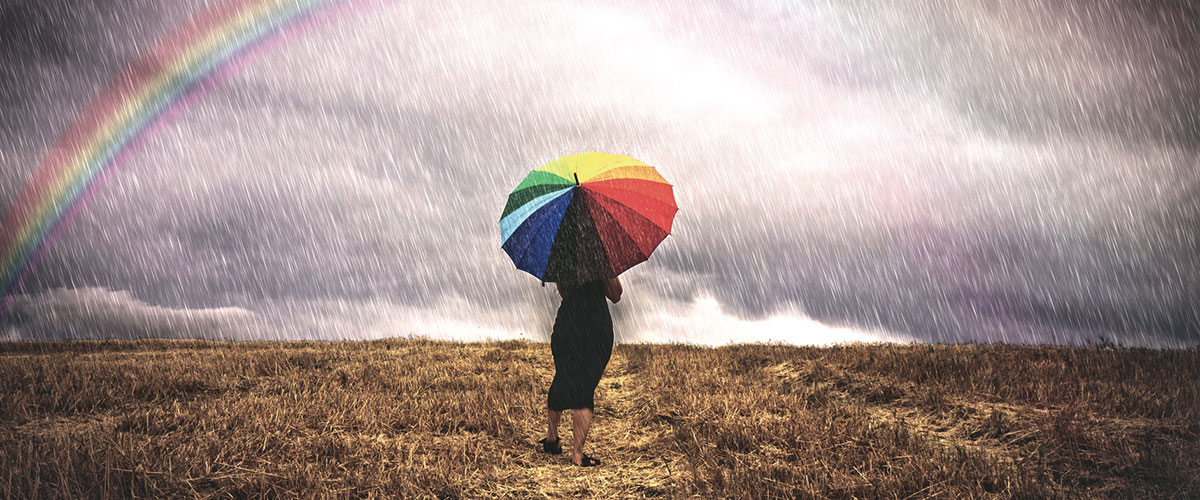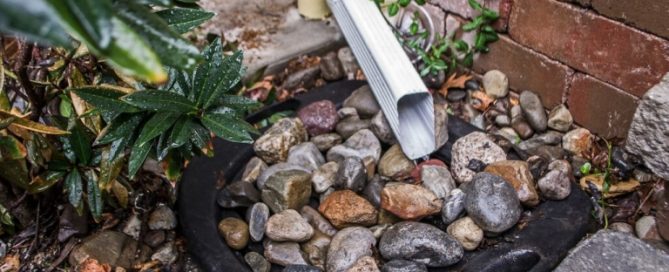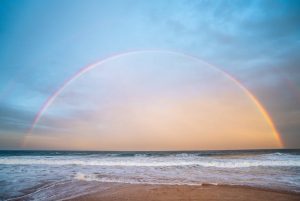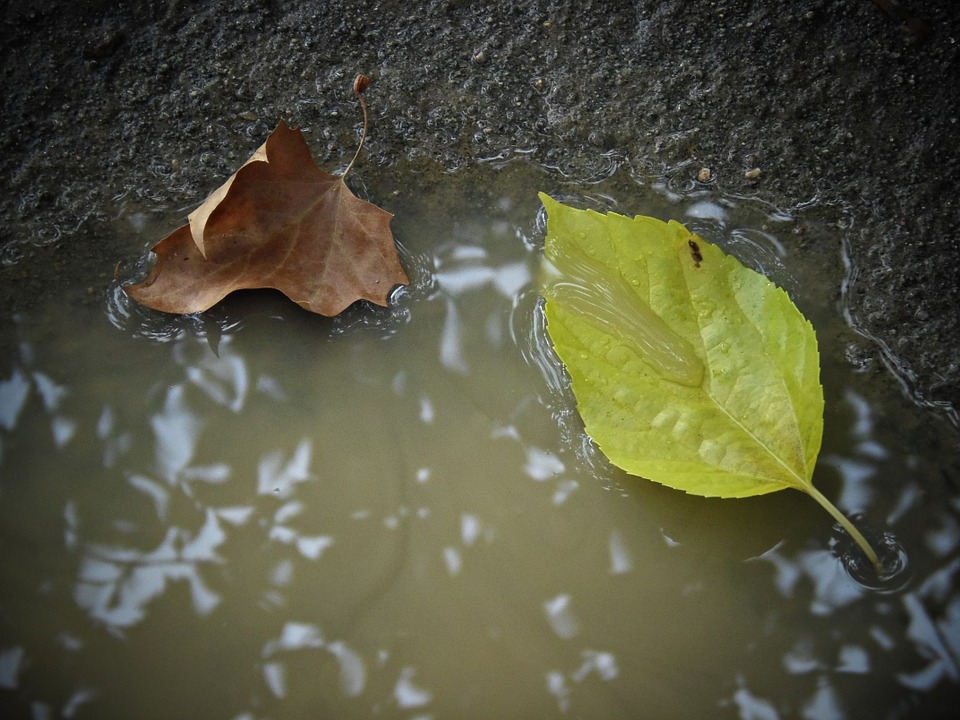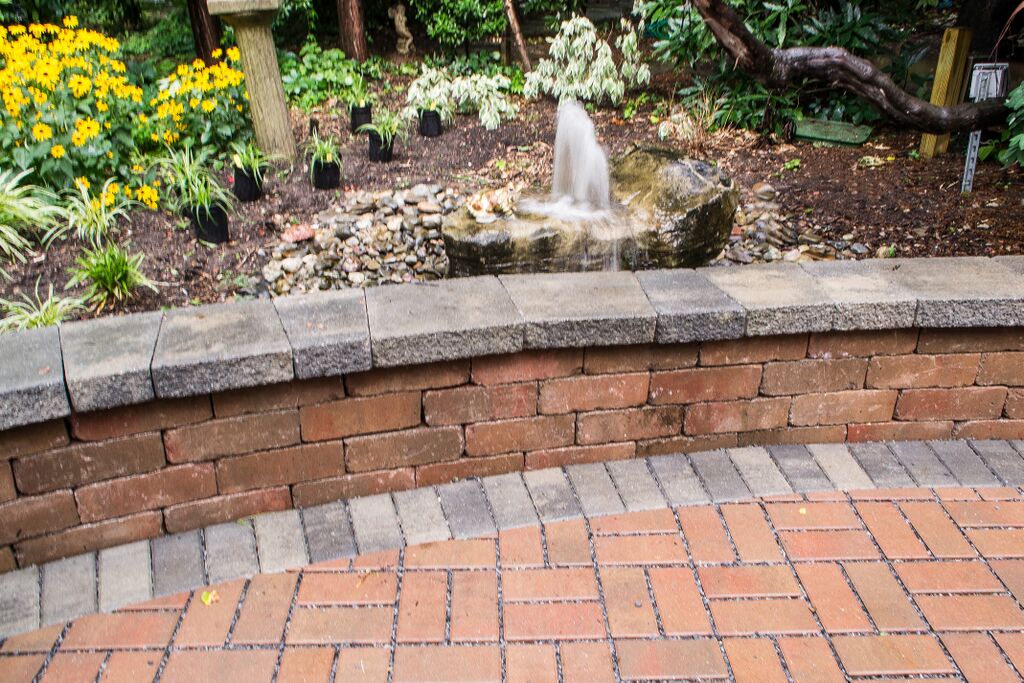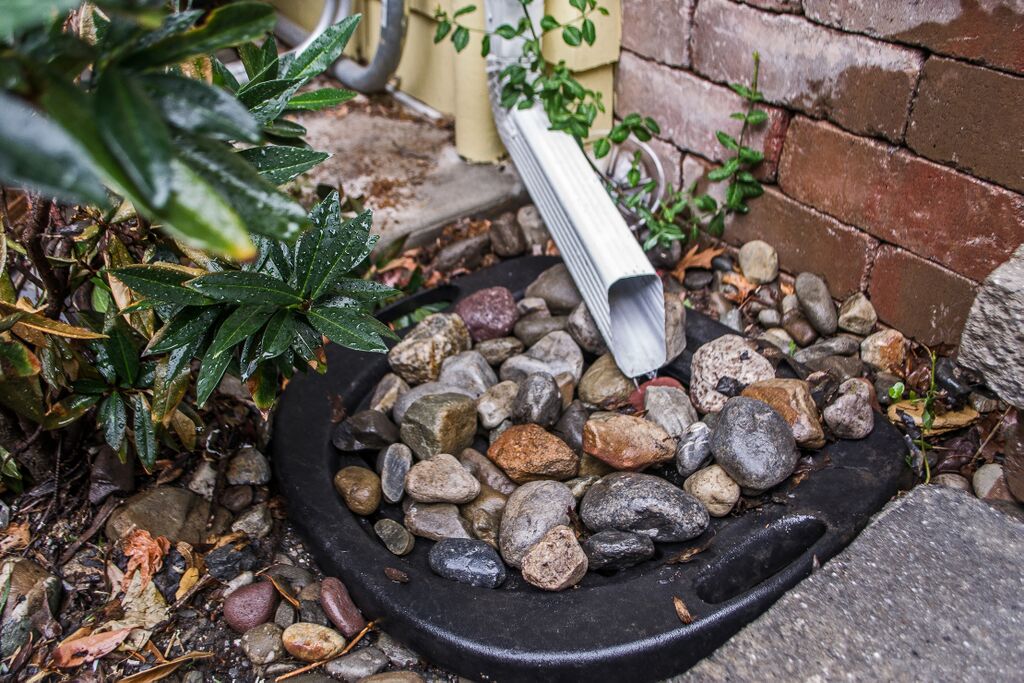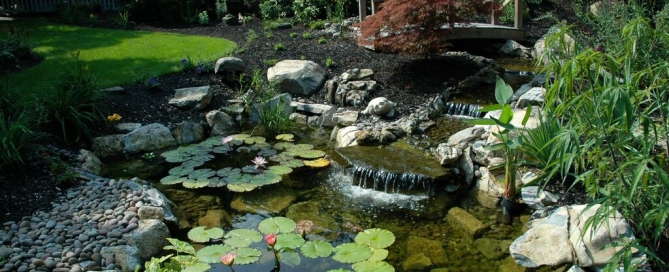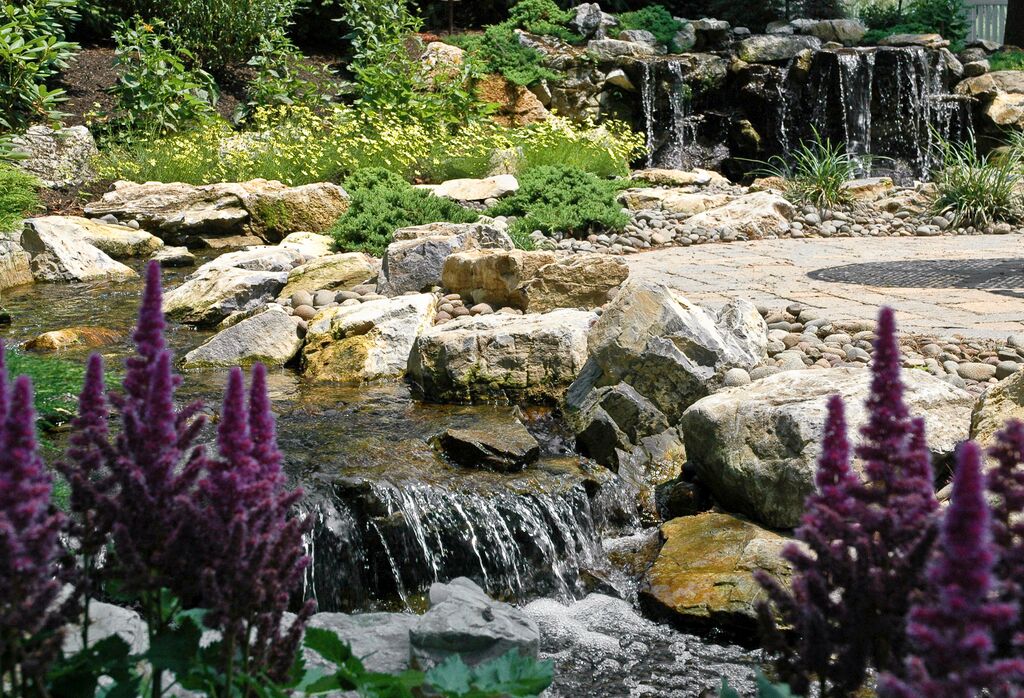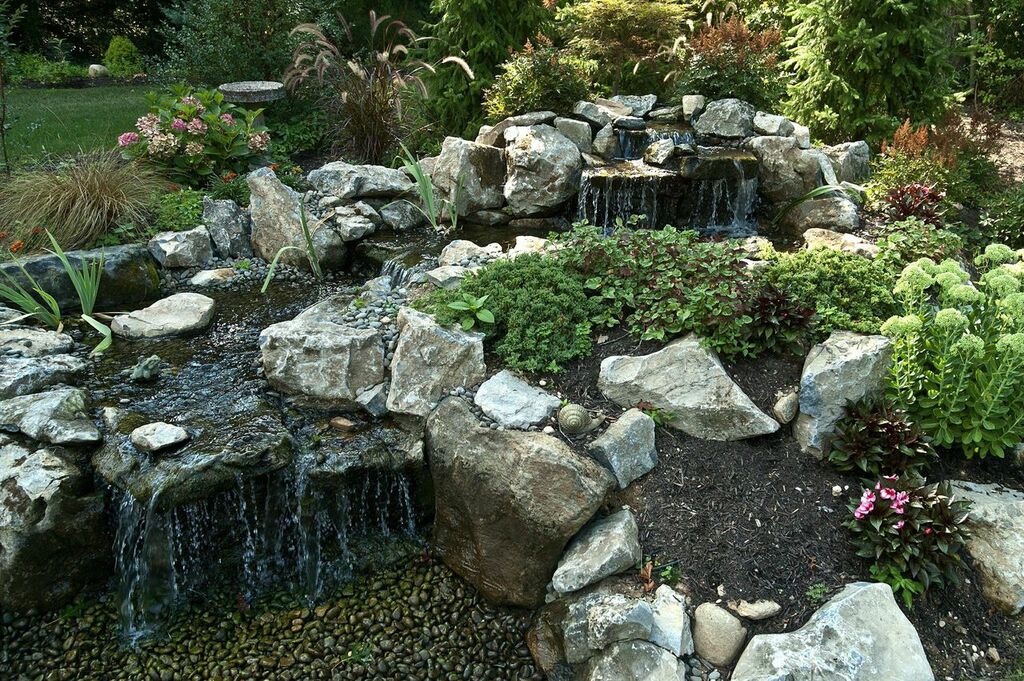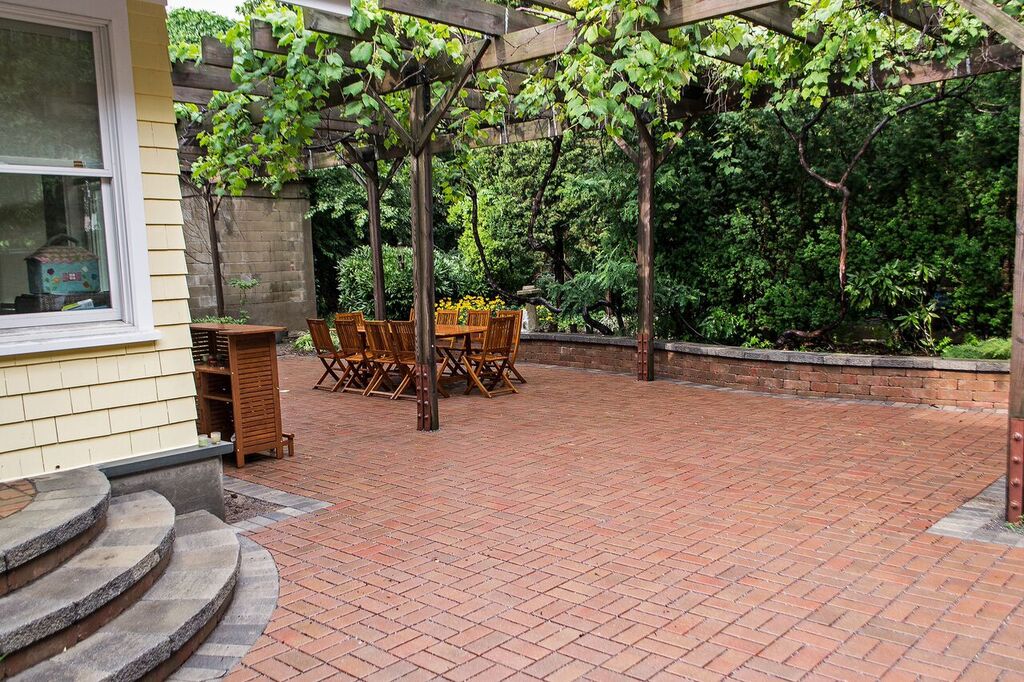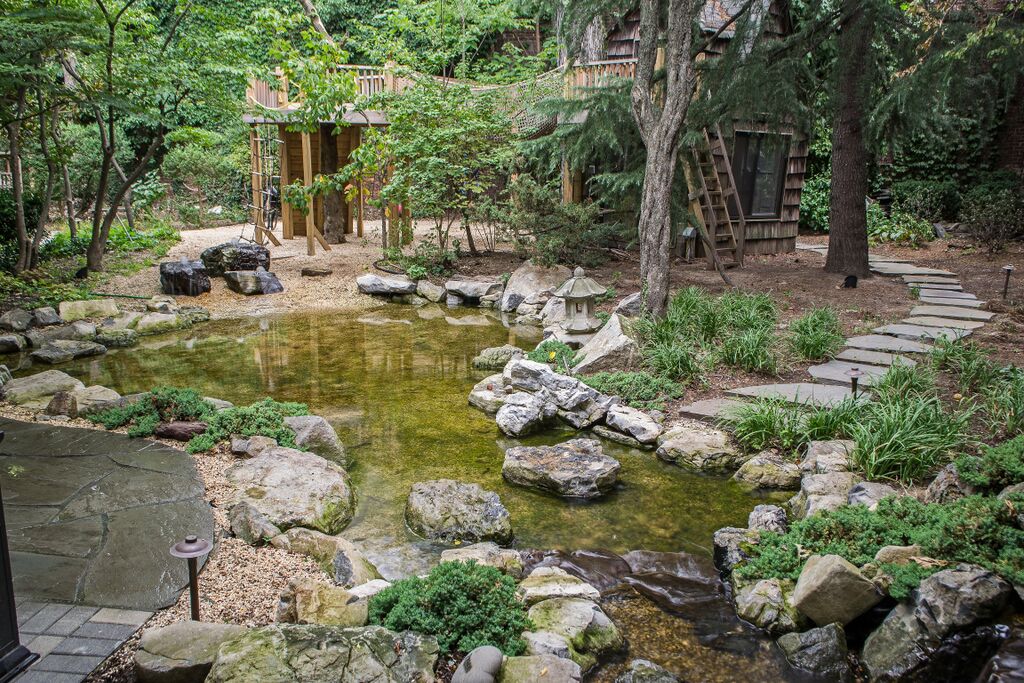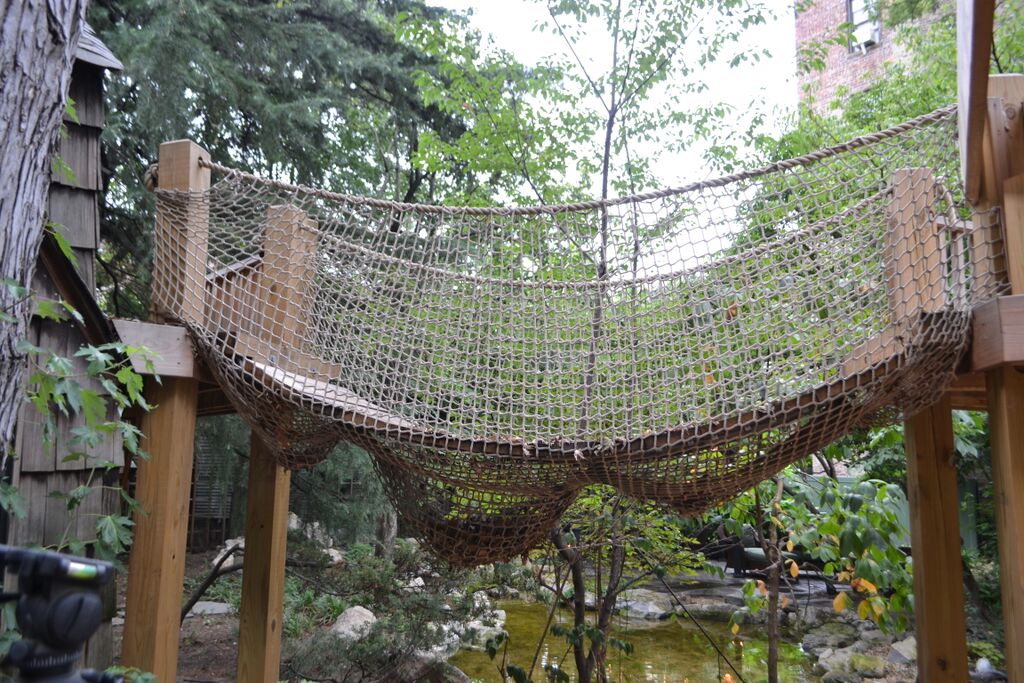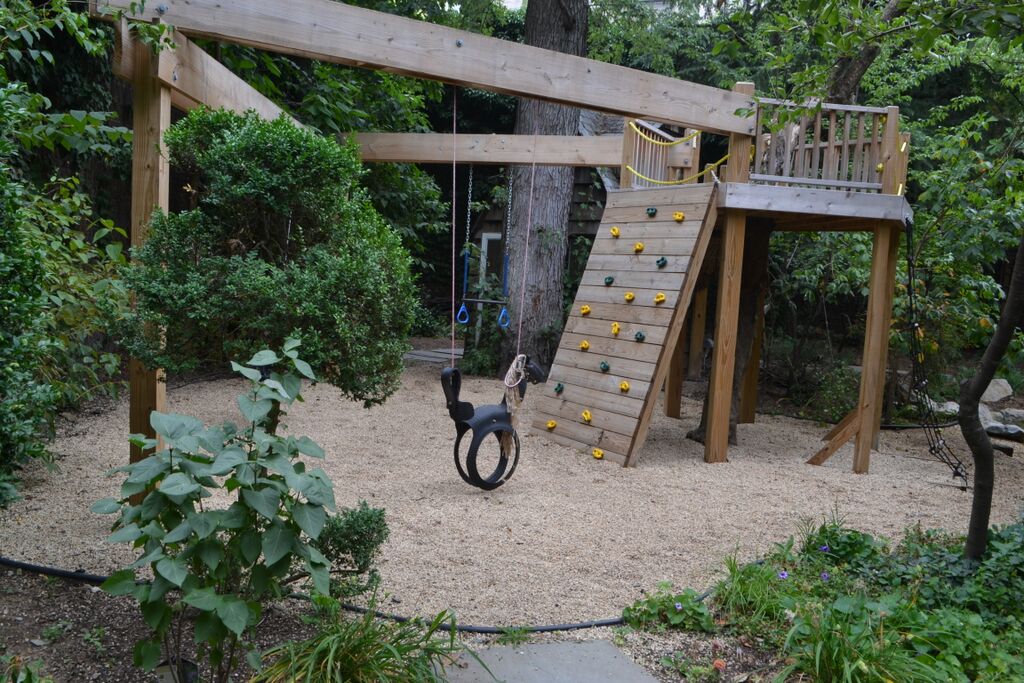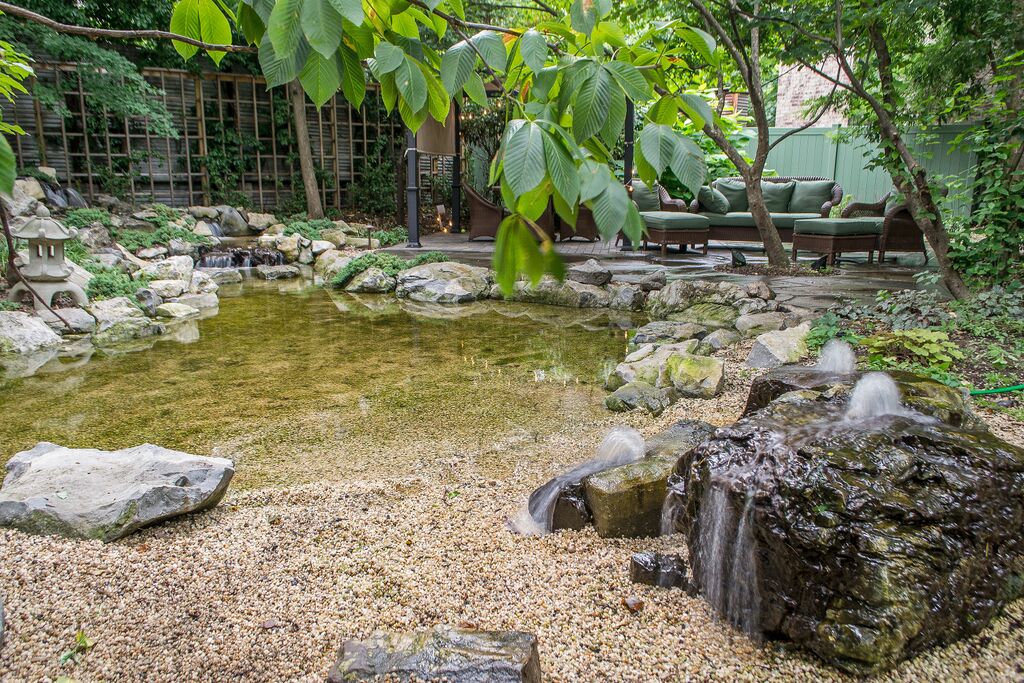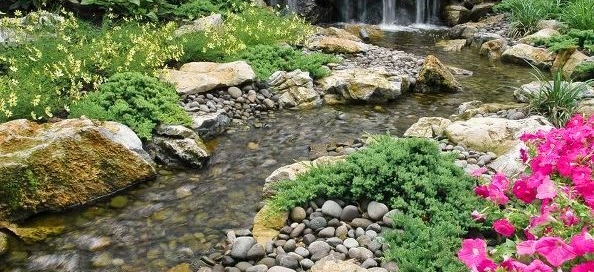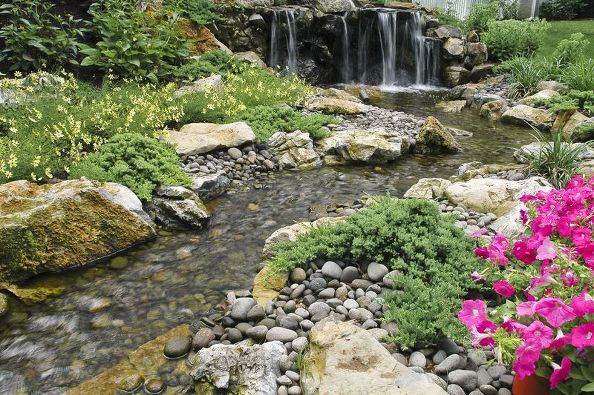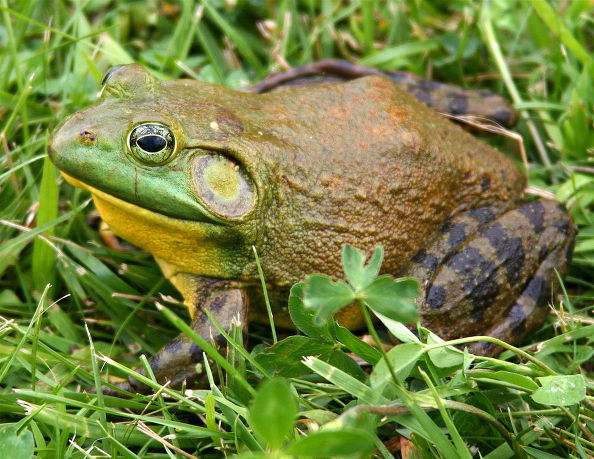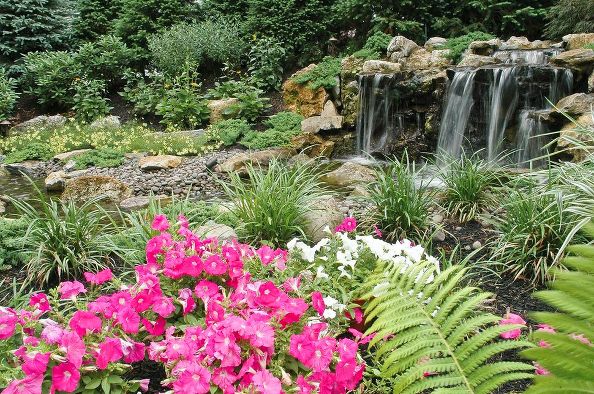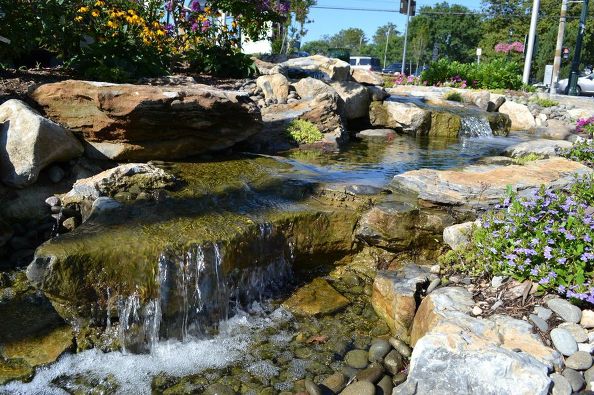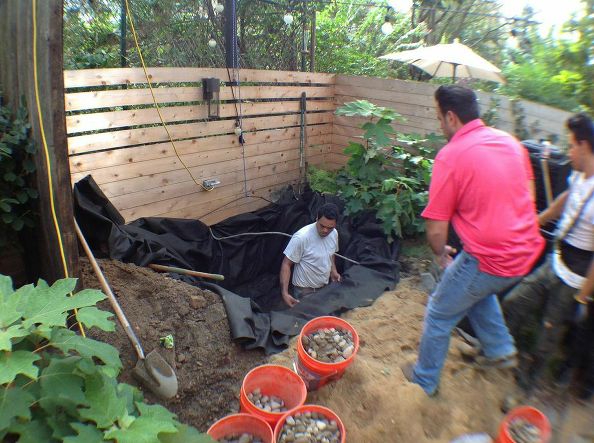Earth Day 2024: Eco-Friendly Water Features
Updated 4-18-24
The organizers of Earth Day (Monday April 22nd) say this year they are emphasizing “conservation” and “sustainability” — along with the steps we can take to end harmful plastics affecting the earth.
Their emphasis of conservation and sustainability certainly caught Deck and Patio’s eye. These priorities have been a vital part of our water feature work for many years.
Eco-Friendly Self-Sustaining Water Features
It’s true: the sounds and sights of moving water turn any property into a restful escape.
But ponds and pond-less water features can also include rainwater harvesting components — offering a great way to save water and aid the local ecology.
Such rainwater harvesting systems support all types and combinations of water features — fountains, waterfalls, ponds, streams.
The captured rainwater can also replenish a water feature’s surrounding landscape, wash a car, rinse down a deck or patio, etc., and it is especially helpful during droughts.
As certified installers of renowned Aquascape Inc. products, the water conservation systems and other water garden products Deck and Patio uses are both technologically and biologically efficient.
Project # 1
The Aquascape products Deck and Patio used for this project include high efficiency pumps, skimmers, biological filters, and gravel beds.
Note: Koi can also be a truly beneficial part of a pond’s eco-system, including this self-sustaining one.
Project # 2
The Aquascape ‘green’Rainwater Harvesting System process for this Deck and Patio feature combines a decorative water feature with a completely sub-surface collection system — thereby creating a beautiful backyard oasis that is very eco-friendly.
“The collection system is located completely below ground,” says Deck and Patio owner Dave Stockwell. “The reservoir is a truly maintenance-free source that keeps topping off the water feature.There is no requirement for City water. It comes completely from rainfall on the roof of the clients’ house — where gravity alone draws it into pipes.”
Project # 3
This Deck and Patio water feature includes a beautiful pond, waterfalls and stream with a bridge across it. Along with the right water plants, everything works together to create a very healthy eco-system — underpinning the peaceful vistas that restore the soul.
Why is this important? Well, such products create a total natural biological system around ponds and waterfalls that can be replenished and maintained entirely through rainfall.
Project # 4
With a “pondless” waterfall, the waterfalls and stream do not drop into a pond, but seep through gravel where it is first filtered and then collected in an underground reservoir and continually recirculated. Because you are continually filtering and recirculating water, such a project is definitely eco-friendly.
However, natural evaporation of the water feature will require, like this Deck and patio one, that the recirculating water be “topped off” and refreshed occasionally. So for those who would prefer to go totally “green” and not use any town water by even occasionally replenishing your stream/waterfall, Aquascape also makes the Rainwater Harvesting System reservoir system we used here.
With Rainwater Harvesting System, runoff rainwater — either from a roof or permeable pavers — is collected to maintain the water feature’s system through completely green rainwater harvesting methods. This captured rainwater can also replenish the surrounding landscape, wash a car, rinse down a deck or patio, etc., and is especially helpful during droughts.
There are many routes to sustainability. And the beautiful water feature you choose for a restful respite will be truly that…having no tinge of guilt about its impact on the environment.
Happy Earth Day, everyone!

